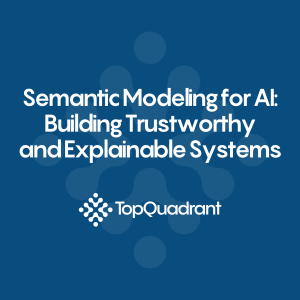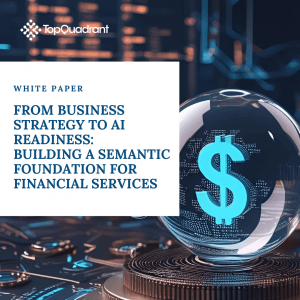Turn ineffective queries into speedy and helpful search.
The more that you can take advantage of search enrichment, the greater the value of your content. If you’re in Media or Publishing, your content is your most important asset. If you’re in another business such as services or manufacturing, you probably have documentation, training materials, marketing collateral, and other content that is key to providing the best value to your customers.
TopBraid EDG’s standards-based data governance solution will create an integrated environment with search engines, text extraction and content management systems to provide better search and enhanced delivery of content. This improves search performance via:
Understanding User Intent
Semantics help search engines comprehend the meaning behind user queries. By analyzing the semantic structure of the query, search engines can accurately interpret user intent and deliver more relevant results. This allows for better matching between user queries and the content available in the knowledge graph.
Entity Recognition and Disambiguation
Knowledge graphs contain information about entities such as people, places, organizations, and concepts. Semantics can aid in recognizing and disambiguating entities mentioned in user queries. By understanding the context, relationships, and attributes associated with these entities, search engines can deliver more precise search results.Contextualized
Search Results
Knowledge graphs enable search engines to incorporate contextual information into search results. By leveraging semantic relationships between entities, search engines can provide more comprehensive and contextually relevant information. For example, a search for a specific historical event can retrieve related facts, relevant dates, associated people, and other related events.
Query Expansion and Refinement
Knowledge graphs can suggest related concepts, entities, and terms to expand or refine user queries. By leveraging the semantic connections within the knowledge graph, search engines can help users discover new aspects of their search topic or refine their queries for more accurate results.
Personalized Search
Semantics and knowledge graphs can contribute to personalized search experiences. By analyzing a user's search history, preferences, and behavior, search engines can tailor search results based on the user's interests and context.
Semantic Search across Languages
Knowledge graphs can bridge language barriers by representing information in a language-agnostic manner. This allows search engines to perform semantic search across multiple languages and provide translations, related concepts, or cross-lingual connections. Users can obtain relevant information even when searching in a language different from the content they are seeking.
Related Knowledge

Blog | What is Enterprise Resource Planning? A Complete Guide for Modern Enterprises
What is enterprise resource planning? A simple guide to how ERP systems work and why they matter for modern enterprises.

Blog | Retrieval Augmented Generation Explained
Discover how retrieval augmented generation (RAG) works, why it matters, and how enterprises use it to deliver trustworthy, context-aware AI outputs.

Blog | Semantic Modeling for AI: Building Trustworthy and Explainable Systems
Resource Hub Search Table of Contents < All Topics Main Semantic Layer Blog | Semantic Modeling for AI: Building Trustworthy and Explainable Systems Print Blog

White Paper | From Business Strategy to AI Readiness: Building the Semantic Foundation for Financial Services
Financial institutions are chasing AI-driven innovation but remain grounded by unclear, disconnected data. This white paper explores how TopBraid EDG helps you move beyond glossaries and governance tools to build a true semantic foundation—enabling trusted data, reusable assets, and explainable AI.
Knowledge Graphs Help Build Scalable AI Agents
Resource Hub Search Table of Contents < All Topics Main Knowledge Graphs Knowledge Graphs Help Build Scalable AI Agents Print Knowledge Graphs Help Build Scalable

How TopQuadrant is embracing Large Language Models (LLMs)
Resource Hub Search Table of Contents < All Topics Main Data Governance How TopQuadrant is embracing Large Language Models (LLMs) Print How TopQuadrant is embracing

